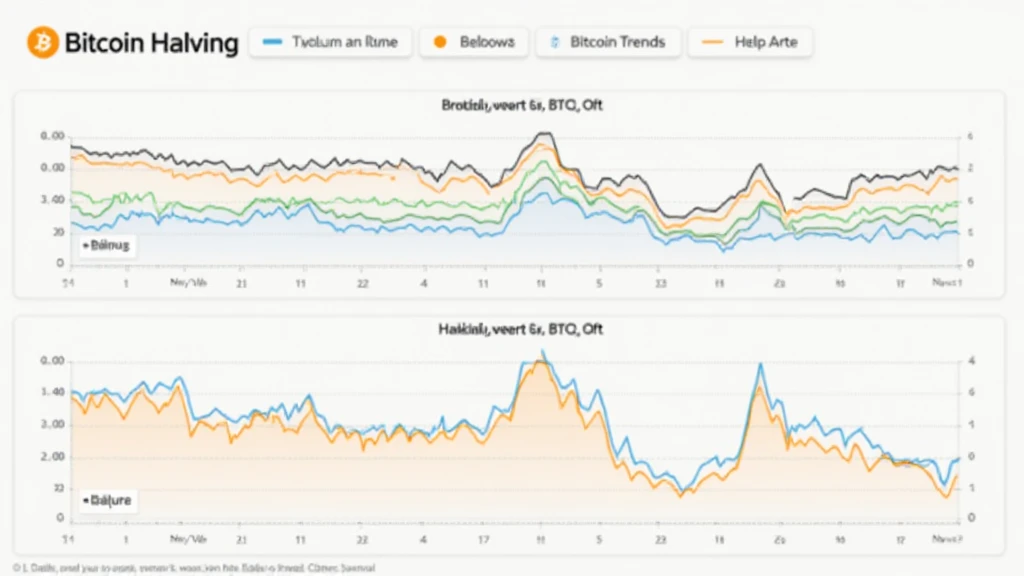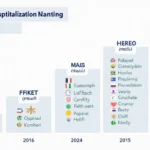Introduction
With Bitcoin’s price oscillating wildly and the upcoming halving event in 2024, many investors and traders are left wondering: what should we expect from the market in the coming years? This article aims to provide a comprehensive understanding of the impacts of Bitcoin halving, backed by data and expert opinions. In particular, we explore the historical significance of halving events, the expected market dynamics, and actionable insights for potential investors.
Understanding Bitcoin Halving
Bitcoin halving is a periodic event that occurs approximately every four years, where the reward for mining new blocks is halved. This mechanism is essential for Bitcoin’s monetary policy, controlling inflation and influencing the overall supply of Bitcoin in circulation. Furthermore, halving directly impacts miners and their profitability, which can, in turn, affect the market.
- First Bitcoin Halving (2012): Increased from $12 to over $1,200 in the following year.
- Second Bitcoin Halving (2016): Rose from $450 to nearly $20,000.
- Third Bitcoin Halving (2020): Prices surged from around $8,700 to approximately $64,000 by April 2021.
Historical Price Trends
Let’s take a closer look at the historical price trends associated with Bitcoin halving events. The data highlights a pattern of price increases following each halving, suggesting a correlation between the supply-side shock and market demand.

Table 1: Price Trends Post-Halving
| Halving Date | Price Before Halving | Price 1 Year After |
|---|---|---|
| 2012 | $12 | $1,200 |
| 2016 | $450 | $20,000 |
| 2020 | $8,700 | $64,000 |
According to historical data, each halving has coincided with significant price appreciation, indicating strong demand leading up to and following the events. Analysts suggest these trends may play out similarly after the upcoming 2024 halving.
Market Sentiment Leading up to Halving
The atmosphere leading up to a Bitcoin halving tends to be charged with anticipation and speculation. Traders often rally collective sentiments, which can cause temporary price increases as they position themselves for the changes in reward structures.
- Increased media coverage fuels interest.
- Retail investors frequently enter the market in hopes of surging prices.
- Institutional involvement often spikes as large holders try to leverage potential gains.
Impact of Institutional Investors
Institutional investors have increasingly become a significant player in the crypto market, particularly in the lead-up to halving events. Their participation not only drives demand but also adds a layer of credibility to Bitcoin as a legitimate asset class.
Bitcoin Halving and Mining Economics
The halving event impacts miners significantly, as their rewards decrease, influencing the overall security and hash rate of the network. Here’s how:
- Reduced rewards may push inefficient miners out of the market, affecting network security.
- Stronger miners may gain market share and influence over transaction validation.
- Electricity costs and mining technology adaptations become increasingly important post-halving.
Future Forecasts for Bitcoin Price
Predicting the price of Bitcoin following a halving event is complex but vital for preparing market strategies. Financial models, such as the stock-to-flow (S2F) model, provide significant insights into potential price movements, suggesting bullish trends following halving events.
- According to the S2F model, Bitcoin could reach anywhere from $100,000 to $1 million by 2025.
- The upcoming halving could potentially see an increase in institutional Bitcoin adoption by 2025, further driving prices.
Long Tail Keywords
It’s crucial to understand various long-tail keywords that align with the interests of potential investors:
- “2025最具潜力的山寨币”: Exploring altcoins with promising fundamentals.
- “how to audit smart contracts”: Important for ensuring the security of investments in the DeFi space.
Vietnam’s Perspective on Bitcoin and Blockchain Technology
As one of the rapidly advancing markets in the ASEAN region, Vietnam has seen a significant uptick in cryptocurrency adoption. The country registered an impressive user growth rate of 65% in 2023, with increased interest in Bitcoin and other cryptocurrencies ahead of the upcoming halving.
- Bitcoin ATMs are reportedly increasing in urban areas.
- The local crypto community is growing, with various meetups and events focusing on blockchain technology.
Conclusion
As we look ahead to the next Bitcoin halving in 2024, a blend of historical data, market sentiment, and technological considerations suggests a potentially bullish outlook for Bitcoin prices. However, investors should remain cautious and conduct thorough research before making investment decisions in this volatile market.
In conclusion, understanding Bitcoin halving market forecasts can significantly enhance your investment strategy. Keeping an eye on the factors discussed in this article, from market sentiment to institutional involvement, is crucial as we approach this pivotal event.
For more detailed insights, visit hibt.com and improve your understanding of future trends within the crypto space.
Author: Dr. Thomas Nguyen – blockchain theorist and researcher with over 30 published papers on cryptocurrency economics and network security.







